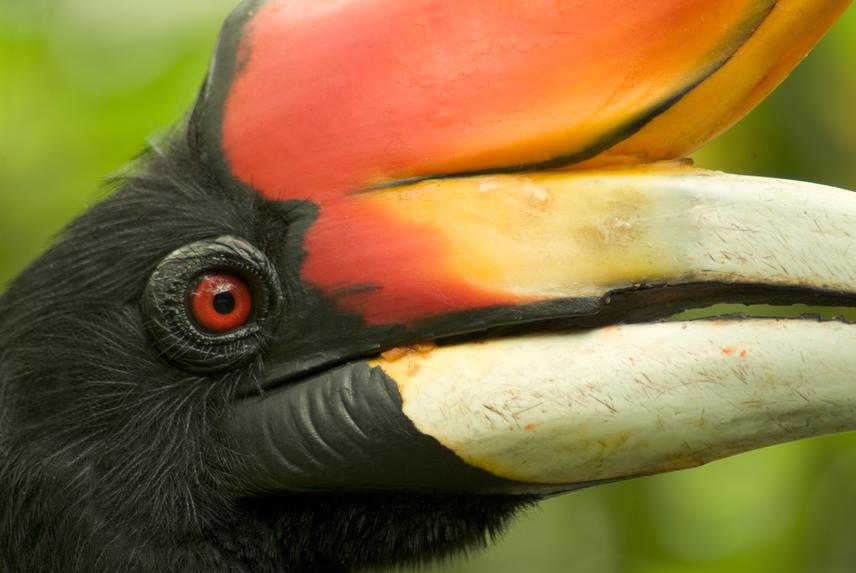Ravinder Kaur
Other projects
In this project, the team aims to provide safe nesting opportunities for the hornbills in Malaysia. The team will search for nests of endangered hornbills and monitor them during their nesting period, with the help of local communities within the area. The team will also establish a tree nursery of various fig tree species, to provide more food resources for the hornbills in degraded areas such as Kinabatangan.

Rhinoceros Hornbill (Buceros rhinoceros). ©Sanjitpaal Singh.
There are eight species of hornbills in the Lower Kinabatangan Wildlife Sanctuary. Kinabatangan is located in the Eastern side of the Malaysian Bornean state of Sabah, this area is known internationally for its biodiversity. The project site covers 27,960 hectares. The sanctuary was officially gazetted as a Wildlife Sanctuary by the Sabah State government in 2005. The area consists of largely secondary forests but it is fragmented and surrounded by oil palm plantations and mills, roads, villages, orchards and small scale farms. These patches are connected to 15,000 hectares of forest that are protected as Virgin Jungle Forest Reserves.
Hornbills are cavity breeders and are unable to create their own cavities. The female will remain enclosed inside the cavity for several months and the same pair will reuse the same cavity, year after year.
The proposed project is a collaboration between Gaia and ngo HUTAN/KOCP. Gaia is a Malaysian social enterprise set up in 2015 by Ravinder Kaur. Currently, Ravinder is a PhD candidate at University Malaya, studying hornbill breeding ecology and conservation in the Kinabatangan. HUTAN/KOCP has been working in Kinabatangan for the past 20 years and they initiated the hornbill conservation project, aiming at documenting the conservation status of these iconic species and enhancing breeding opportunities. Because of the lack of suitable cavities for nesting, HUTAN started installing artificial nest boxes. This initiative has had success, with the vulnerable Rhinoceros hornbills (Buceros rhinoceros) nesting in two of these boxes and producing three chicks in two years. The Gaia team joined HUTAN in 2015 to assist in this important initiative.
With support from Rufford Foundation, Gaia and HUTAN will work together to search for nesting sites of endangered hornbills. Once these nests are located, the team can appoint local people to monitor and protect these nests. Important data such as the hornbill’s food preferences can be learnt through nest observations. In addition, the team will establish a plant nursery, to replant important food plants of hornbills in the degraded forests of Kinabatangan.